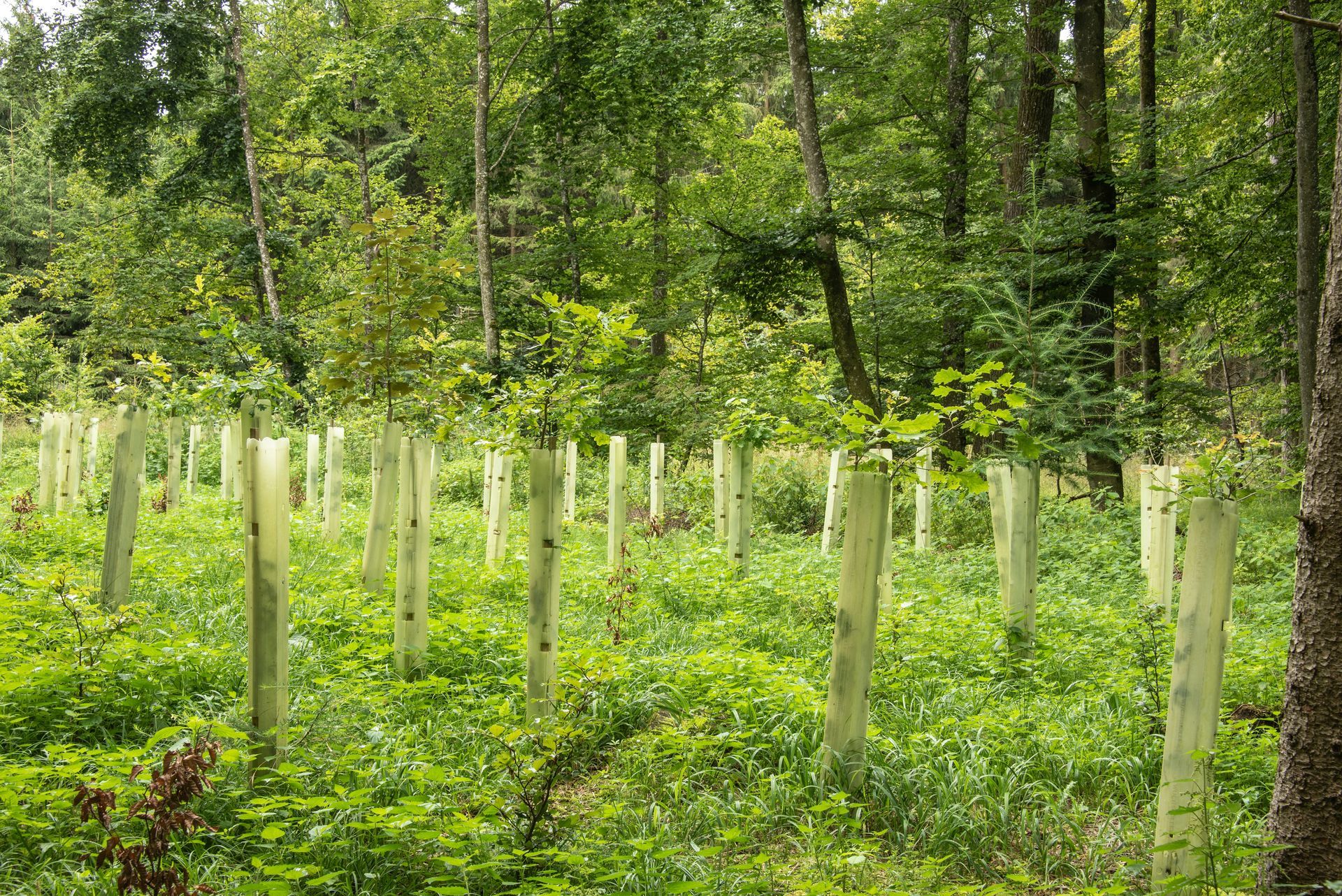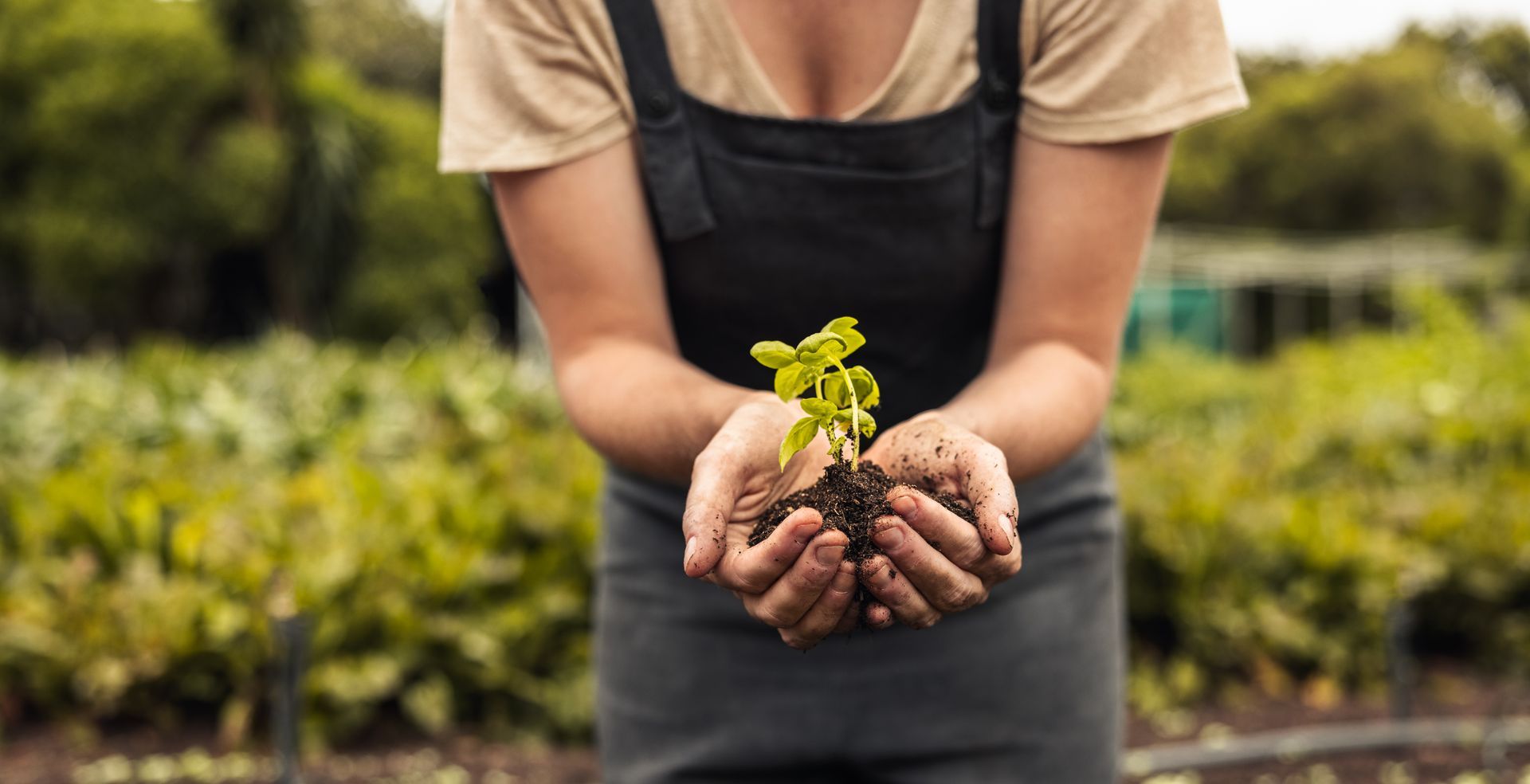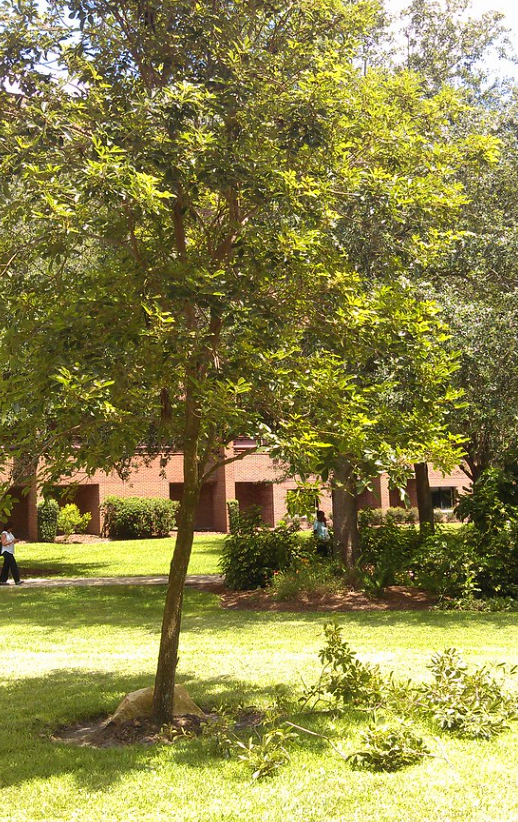What Are Tree Shelters?

Tree shelters, or tree tubes, are small structures that protect young tree saplings or newly planted tree seedlings from roaming animals. They protect saplings from hungry herbivores, increasing the tree's chance of growth. Planting trees is complicated enough, so read below and apply the tips to make sure your newly planted trees survive.
Table of Contents
Why You Need Tree Shelters
You need tree shelters for young trees because they protect the tree from deer and rodents (and other animals), wind, and chemical sprays. Not only that, but they create a mini-greenhouse environment for the tree that promotes rapid tree growth.
Benefits of Tree Shelters
Faster Establishment & Tree Growth
Tree shelters allow young saplings to gain establishment in the ground faster than those trees without them. Getting a tree established is critical to... everything. Sheltered trees have a significant decrease in mortality compared to non-sheltered seedlings.
Protection From Animals
Everyone knows animals love eating whatever than can. Having a tree guard on your young sapling can stop rodents, deer, rabbits, and any other little critter that might want to come and cause mischief to your tree. Nothing worse than rodent damage.
Protection Against Herbicides & Pesticides
As mentioned above, tree shelters will protect young saplings from aggressive spraying on the lawn. Even if you are using a tree shelter, you should try to avoid spraying near the tree at all costs, but the tree shelter will provide some covering from the spray.

When To Install Tree Shelters
Tree shelters should be installed after you finished your tree planting. You use a support stake to install the structure. You can install them with or without tillage or too much weed control, but you need regular inspections on the structure to ensure they maintain protection.
What To Do When Trees Grow Beyond Their Shelters
Once the sapling gets big enough to grow out of the shelter, the protective effects for the trunk remain. However, it is now exposed to the elements. With that, the micro-greenhouse effects are over, and the tree will grow like a regular tree.
Animals can, of course, attempt to eat the tree leaves if any are present. You either need to remove or replace the tree guard.
Removing & Replacing Tree Guards
When the tree ages, it will eventually outgrow the tree guard. Be sure to remove or replace the guard as it's outgrown.
Only remove the shelters and stakes when it begins to restrict the tree stem diameter growth. For some shelters, that means you have to destroy them to replace them.
Be careful not to replace the tube too early because the tree might not be able to hold itself up. They need to grow above the shelters for years before they are able to withstand the wind. Tree bark new to exposure could take weeks to toughen up and develop resistance to the elements.
Tree shelters can encourage weak branches within the tube. These lateral branches typically grow in a V-shape so they are easy to recognize. Prune off the weak branches with a sterilized set of tree loppers after you take the tubes off. This is common with tree shelters as they restrict the growth of the limbs within the tube. Windbreak trees will need more robs of shrubs or conifers to protect them close to the ground.
Tree Shelter Installation & Maintenance
Installation will vary depending on the type of tree shelter you buy or make. We recommend you follow any manufacture recommendations. We cover PVC below.
Tree Tube Installation
Drive a steak into the ground 3" from the seed, seedling or sapling. Make sure you dig about 1' deep, but make sure the stake will be about 3" to 6" above the highest tie.
Slip the ties over the stake and the tube, making sure the ties hold the stake to the tube. Put the seed or seedling in the center of the tub. Push the tube down firm into the soil about 1" deep.
Don't catch any limbs under the ties, it will stunt the growth. Tighten your ties as needed.
Tree Tube Maintenance
Inspect your tree tube at least annually but as much as you feel you need. If the shelters are tipping or tipped over, straighten 'em up. Replace any stakes that have broken. Make sure you control for weeds (mulch, mowing, herbicides, etc.).

Sweet New Earth's Final Word
Thanks for stopping by! We hope you liked this short but sweet article on tree shelters. Not many people are aware of the perks given by these pieces of plastic but they are certainly not negligible.
Tree seedlings need all the help they can get to establish their roots and tree tubes are one of the best ways to help.
If you liked this guide be sure to check out some of our other guides on trees or tree tool reviews. We plan on writing a best of list for tree shelters soon. Thanks again.
FAQs

Christina Hernandez
Christina has done most of her research on environmental science but recently has changed her focus towards sustainable forestry. She has a passion for the outdoors and wants to spread that passion to the world.
Join our community!
Join to receive guides, insights, and the latest gardening deals!
